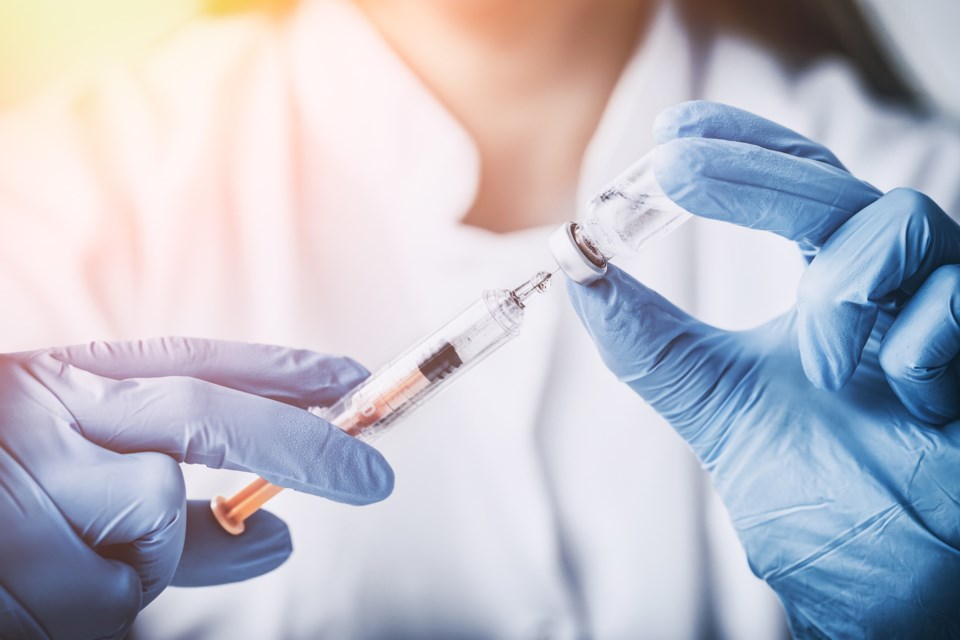Young people in Ontario have the highest rates of COVID-19 infection among unvaccinated individuals, the province's top doctor said Tuesday as he called again for all those eligible to get their shots.
Over the last three months, 96 per cent of people between the ages of 19 and 29 who were infected with COVID-19 weren't vaccinated against the virus, Dr. Kieran Moore said.
Ninety-nine per cent of infected people between the ages of 12 and 17 were unvaccinated.
"That age group is coming down with a higher rate of disease than other age groups across Ontario," Moore said.
"They're a key metric, because they're the ones that are going to be going to high schools, to colleges, to universities, to workplaces, and potentially, unbeknownst to them, if they're carrying the virus without symptoms, spreading it in those environments."
He added that young Ontarians will be a "key target" in the vaccination campaign going forward.
"We've been on calls with the local public health agencies and immunization partners around the province who are seeing this lack of uptake in the younger age groups and are looking at ways to encourage them to step forward," he said.
The data on infections among unvaccinated people was presented one week after Moore commented on the relative lag in immunizations among younger Ontarians.
Overall, the province's vaccine coverage is relatively high, with 79 per cent of adults vaccinated with at least one dose and 57 per cent fully immunized against COVID-19.
Adults aged 18 to 39 have a 68 per cent first-dose coverage rate and youth 12 to 17 have a first-dose rate of 60 per cent.
The progress of the vaccination campaign has set the province up to move ahead this week with rolling back more public health restrictions on businesses, gatherings and other activities even further.
The number of vaccinated teens is particularly important as the province prepares for the return to school in September. The province has said it will offer two vaccine doses to all eligible students and staff before classes resume, and vaccines aren't fully effective until 14 days after the second dose.
Moore said he anticipates a rise in infections in the fall as people move activities indoors. With the highly transmissible Delta variant now dominant in the province, he said high vaccination coverage will be crucial to keeping infections low.
"The Delta strain will seek out unvaccinated individuals and so becoming immunized as soon as possible will ensure that you are not on that path of least resistance for the virus," he said.
Ontario reported 146 new COVID-19 cases on Tuesday and seven deaths from the virus.
The two Ontario public health units that reported the highest new case counts on Tuesday "continue to struggle" with the Delta variant, said the province's associated medical officer of health.
But Dr. Barbara Yaffe noted that Grey Bruce and Waterloo Region have shown "what can be achieved" in the fight against that variant by getting vaccinated and following public health orders.
"The people in both regions have made a remarkable effort to protect and care for each other by getting vaccinated and as a result, both regions are seeing their case rates drop," Yaffe said.
Waterloo Region, which had delayed its reopening due to a surge in Delta variant cases, said Tuesday it would lift restrictions along with the rest of the province this week.
The changes taking effect at 12:01 a.m. on Friday will allow indoor dining and gyms to reopen, as well as expand crowd limits on social gatherings and other events.
Waterloo delayed entering the second step of the reopening plan, but the top doctor for the region said Tuesday that public health indicators have stabilized and vaccination rates have increased rapidly.
Dr. Hsiu-Li Wang also encouraged residents to get their second vaccine doses and continue following public health orders as the Delta variant remains a threat.
This report by The Canadian Press was first published July 13, 2021.
Holly McKenzie-Sutter, The Canadian Press
